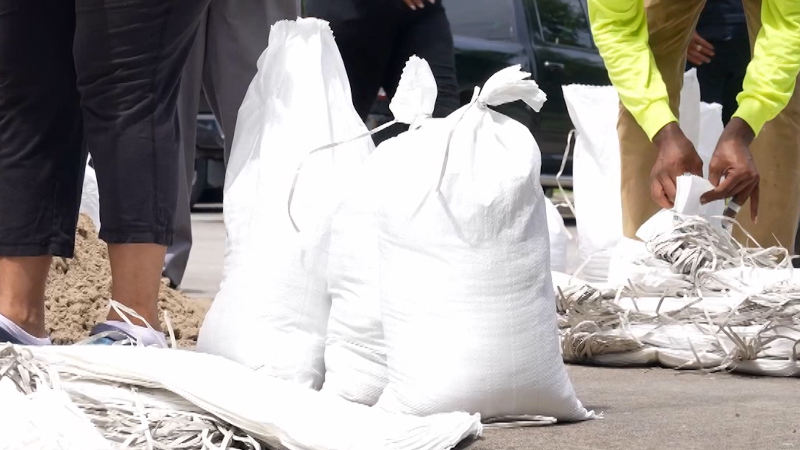Why spring snow doesn't pile up on roads but can yield other hidden dangers
During March and early April, the probability of a widespread heavy snowstorm diminishes dramatically, but snowfall impacts can be more intense in localized areas.
While this does not mean that a heavy snow cannot occur during late March and April, it means that the risk of a heavy accumulation of snow occurring over a broad area decreases.
There are a number of factors for this.

A woman walks her dog through heavy snow in Hoboken, N.J., Wednesday, March 7, 2018. (AP Photo/Seth Wenig)
“Unless snowfall rates are intense, snow tends to melt on paved surfaces. That said, there can be heavy accumulations on elevated surfaces like trees and power lines, which could lead to issues like power outages," AccuWeather Vice President of Forecasting and Graphics Operations Marshall Moss said.

The single most negative influence on heavy snowfall this time of the year is the strengthening sun.
The tilt of the earth as it orbits around the sun causes the rays of the sun to strike the Northern Hemisphere at a higher and higher angle through the spring. These more direct rays warm the ground and the lower atmosphere.

As a result, it must snow at a heavier rate to accumulate during the daytime compared to the nighttime or compared to the middle of January.
This is especially true on paved and concrete surfaces that tend to absorb more of the sun's rays than grassy areas, tree limbs and roofs of cars and homes.
Since storms during the late winter and early spring tend to have much more moisture available to them, snow may fall at an intense rate in some locations.
These variations may lead to a dramatic range in accumulation on both paved and non-paved surfaces in a distance of a few dozen miles.
Meteorologists factor in the intensity of the snowfall rate, time of day and surface temperatures as well as strength and track of the storm while making a snowfall forecast.
While a particular spring snowstorm may only cause roads to be wet and slushy, conditions a few feet off the ground may be a disaster.

A motorist navigates around a downed limb partially blocking a road and resting on a power line after a snowstorm, Thursday, March 8, 2018, in Northborough, Massachusetts. The storm produced heavy, wet snow that brought down tree limbs and power lines. (AP Photo/Bill Sikes)
The excessive weight and clinging nature of spring snowfall the versus dry, powdery snow from the middle of the winter often brings down trees and power lines.
While there may be a temptation to walk or drive through wooded areas after a heavy snowfall, there may be a risk of a tree limb falling without notice.
The heavy, wet nature of a spring snowfall may also clog snowblowers and stick to shovels.
Shoveling wet snow may not only be difficult; it could be dangerous for some individuals. Often snowfall during spring storms is referred to as "heart attack snow."
Snowfall during the spring often weighs many times more than that of a dry, powdery snow during an arctic outbreak in January.
It may be best to shovel or plow the snow periodically during the storm, rather than wait until the very end, when the snow is the deepest.
Not only is a heavy, wet snowfall a concern when shoveling, but it may also cause flat or weak roofs to fail and collapse.
Generally, the steeper the angle of the roof, the more snow load it can handle.
Property owners should remove the snow from their roofs only if they have the proper equipment and can do so safely.
So while a heavy snowfall may become less of a problem on the roads as the spring progresses, storms this time of the year can still bring an excessive amount of snow in a small area, leading to major power outages and other health hazards.
At the first sign of a storm of this nature, AccuWeather alerts the public of potential trouble.
Report a Typo
















